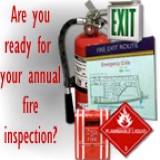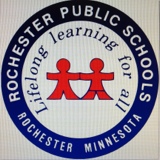Information
-
School District
-
Building
-
Facility Code Number
-
Conducted on
-
Prepared by
-
NYS Registry Number
-
Location
-
Personnel
1. Exit ways (corridors, stairs):
-
A-2 There are at least two means of egress from each floor and corridor.<br>
-
B-1 Corridor pockets and dead end corridors are less than 1.5 times the pocket or corridor width respectively. <br>
-
<br>C-1 Glazed areas in and adjacent to doors and within 48 inches of floors are protected by railings, grilles or safety glazing.<br> <br>
-
D-1 Glazed areas in and adjacent to doors and within 18 inches of floors are marked to prevent injury to occupants.
-
E-1 Stairways in buildings having wood structural members or roof deck, are enclosed with noncombustible construction and self-closing doors to effectively obstruct the spread of smoke and fumes from floor to floor, or each classroom has direct access to an exterior exit door.<br>
2. Exits
-
2A-2 Exit doors, except those serving one or two classrooms, swing in the direction of travel.
-
2B-1 Exit doors, except those serving one or two classrooms are equipped with panic hardware.
-
2C-3 Spaces of pupil occupancy over 500 square feet have two means of egress into separate zones. The primary egress is a door to the corridor and the secondary egress is a door directly to the exterior, a door to a separate smoke zone, an emergency rescue window, which is of a size and design, including hardware, which permits emergency egress (6-square feet minimum clear opening with 24-inch minimum dimension), unless a variance is granted by the Commissioner.
-
2D-1 All emergency rescue windows are identified by signs as specified on the window and /or on any window shades, blinds, or curtains.
-
2E-2 Emergency rescue windows are free of obstructing bars, screens, grilles or classroom equipment, or if so equipped, windows must be releasable or removable from the inside without the use of a key, tool, or force greater than that needed for normal operation (F1027.5). Revised 1/09
-
2F-3 Enclosed courtyards exceeding 700 square feet in area have at least two remote exits into separate smoke zones.
-
2G-2 Hardware on doors from courtyards is of a type that will always permit exiting from the space without the use of a key.
3. Boiler/Furnace Rooms
-
3A-3 Gas and oil fuel-burning equipment having over 400,000 BTU per hour capacity are provided with electronic flame safeguard controls that upon flame failure normally respond in 2 to 4 seconds to cut off fuel supply.
-
3B-1 Certificates are posted that indicate that each boiler has been inspected in compliance with Section 204 of the Labor Law.
4. Storage and Special Rooms
-
4A-2 Two-hour fire-rated enclosure with 1½ hour self-closing fire doors are provided for the following spaces: 1) Boiler, heater, or furnace rooms, incinerator rooms, 2) Refrigeration rooms and transformer vaults, 3) Store rooms for fuel, flammable liquids, and gas-powered equipment.
-
4B-2 Required fire doors are maintained in a normally closed position unless held open by approved automatic devices.
-
4C-1 Unused ducts and shafts are sealed off at each floor level with fire resistive materials.
5. Assembly Use Areas
-
5A-3 Exit doors from places of assembly are remote and have panic hardware (existing push-pull type hardware with no latching hardware is acceptable).
-
5B-2 School buildings with wood structural members or roof deck do not have places of assembly above the first floor, unless approved by the Commissioner.
-
5C-2 Places of assembly are provided with emergency lighting to illuminate exits.
6. Housekeeping, General Operation
-
6A-1 There are no fixed or portable control gates that create dead-end conditions.
-
6B-1 Wherever available, new and replacement mercury vapor or metal halide lamps are of fail-safe type that will self-extinguish if shielding is broken, cracked, or removed.
-
6C-1 Where new or replacement fail-safe lamps are not available, separate ultraviolet radiation-absorbing shielding is provided.
-
6D-2 Space under stairs and landings is not used for storage unless separated by two-hour fire rated construction.
-
6E-3 Attic space in buildings of combustible construction is not used for storage.
-
6F-1 Storage in storerooms and classroom areas is orderly and restricted to items of obvious value and usefulness.
-
6G-1 Wood floors are not finished or treated with oil and floors so treated were cleaned and refinished.
-
6H-2 Direct-fired fuel-burning heating units shall not be used in any space of student occupancy.
7. Fire Alarms
-
7A-3 School buildings of seven or more classrooms are equipped with a manually operated electric fire alarm system that will continue to sound the alarm until the tripped station has been restored to normal operation or has completed a cycle of not less than 30 seconds. School buildings of one to six classrooms are equipped with either a manual, hand or electric, fire alarm capable of being sounded for such period of time as to insure evacuation of the building, or with an electric fire alarm system as described above.
-
7B-2 Fire alarm stations are located on every floor.
-
7C-2 The building has a telephone that can be used in an emergency.
8. Electrically Operated Partitions
-
8A-2 Partitions are operated by two (2) key operated, tamperproof, constant pressure, switches wired in series, remotely located at opposite ends and opposite sides of, and in view of, the partition.
-
8B-2 The partition is capable of being reversed at any point in the extend or stack travel cycle.
-
8C-2 Device(s) are provided for all partitions that will stop the forward or backward motion of the partition and stop the stacking motion of the partition when a body or object passes between the leading panel of such partition and a wall or other termination point, or when a body or object is in the stacking area of such partition.
-
8D-2 Appropriate and conspicuous notice regarding the safe and proper operation of the electrically operated partition, required training, and supervision of students is posted in all partition operator locations.
-
8E-2 Records of inspection, testing, and maintenance of electrically operated partitions are maintained on premises and are available for inspection. Revised 1/09
9. General Precautions Against Fire
-
9A-2 Combustible waste and vegetation shall not create a hazard.
-
9B-2 Open flames are prohibited except supervised science and technology labs.
-
9C-1 Storage in buildings is orderly.
-
9D-1 Storage ceiling clearance of 24 inches is maintained in nonsprinklered areas of buildings or 18 inches below sprinkler head deflectors in sprinkled areas of the building.
-
9E-1 THIS ITEM DELETED - NO LONGER IN NYS FIRE CODE
-
9F-2 Combustibles are not stored in boiler rooms, mechanical rooms, or electrical equipment rooms.
-
9G-2 Fueled equipment shall not be stored, operated, or repaired within a building.
10. Emergency Planning and Preparedness
-
10A-2 Fire safety and evacuation plans are prepared, maintained and available for review.
-
10B-2 MSDS sheets are complete and available on premises.
-
10C-1 Hazardous material containers and rooms are properly identified.
-
10D-1 Records of hazardous material inventory statements are provided.
11. Fire Service Features
-
11A-2 Fire apparatus access roads are maintained and unobstructed. (NOTE: gates are permitted.)
-
11B-1 Flat roofs, less than 30 degrees (6/12 pitch), are free from obstruction.
-
11C-2 Private fire service hydrants, mains, and tanks are properly maintained and tested.
-
11D-2 Fire hydrants are maintained free from obstruction.
-
11E-1 Fire protection equipment and locations are identified and maintained.
12. Building Services and Systems
-
12A-1 Equipment access is maintained.
-
12B-3 Portable unvented heaters are prohibited.
-
12C-2 Above-ground gas meters are protected from damage.
-
12D-2 Records of inspection, testing, and maintenance of emergency and standby power systems are maintained on premises and are available for inspection.
-
12E-1 No electrical system hazards observed or reported.
-
12E-1 No electrical system hazards observed or reported.
-
12F-1 Service equipment areas are adequately illuminated.
-
12G-1 Electrical service and branch equipment working space is unobstructed.
-
12H-1 Electrical room doors and all disconnects are identified.
-
12I-1 Unapproved multi-plug adapters are not used.
-
12J-1 Extension cords are properly used and are not a substitute for permanent wiring.
-
12K-1 Outlet, switch, junction boxes, and wire splices are covered.
-
12L-1 Refrigeration systems are accessible, properly labeled, and records of periodic testing are available on premises.
-
12M-1 Approved elevator emergency signs are provided.
-
12N-1 Emergency elevator keys are properly located in an approved location for immediate use by the fire department.
-
12O-2 Heating equipment, chimneys and vents are maintained and are in proper working order.
13. Commercial Kitchen Hoods
-
13A-2 Kitchen hood is provided and maintained at commercially used equipment capable of producing grease vapors or smoke.
-
13B-2 Hood fire extinguishing system, where provided, is maintained and serviced in accordance with Section F904 of the Fire Code of New York State.
14. Fire Resistance Rated Construction
-
14A-2 Fire resistance rating of rated construction is maintained.
-
14B-2 Opening protectives are properly maintained and are not blocked or made inoperable.
-
14C-2 Doors requiring closers are not rendered inoperable by removal of the closer or the installation of any nonautomatic hold open device.
-
14D-1 Records of annual inspections of sliding and rolling fire doors are available.
15. Decorative Material and Furnishings
-
15A-2 Furnishings do not obstruct or obscure exits.
-
15B-1 Storage of clothing and personal belongings in corridors and lobbies is compliant.
-
15C-2 Artwork and teaching materials are limited to not more than 20% of the corridor wall area.
-
15D-2 Curtains, drapes, hangings and other decorative materials suspended from walls or ceilings shall be fire resistant or non-combustible.
16. Fire Protection Systems
-
16A-2 Fire detection, alarm, and extinguishing systems are operative and inspection, testing and maintenance records are maintained and available for review on premises.
-
16B-2 Portable fire extinguishers are located in a conspicuous location, are readily accessible, are not obstructed or obscured, and are maintained in accordance with this section and NFPA.
-
16C-2 Fire pumps are inspected, tested, maintained, in accordance with this section and NFPA 25 and records are available on premises for review.
17. Means of Egress
-
17A-3 The required capacity of means of egress is free of obstructions.
-
17B-2 Exterior exits are free from obstruction, including ice and snow.
-
17C-2 Curtains, drapes, or decorations shall not be placed to obstruct exits or visibility thereof.
-
17D-2 Exit signs are provided in rooms or areas which require two or more exits.
-
17E-1 Exit sign placement shall be such that no point in an exit access corridor is more than 100 feet from the nearest visible exit sign.
-
17F-3 Doors shall be readily operable from the egress side without the use of a key or special knowledge or effort. Electromagnetic locking devices are not allowed. Rev. 4/2/07
-
17G-1 Occupant load is conspicuously posted in all assembly spaces where occupant load exceeds 50 persons.
-
17H-2 Means of egress are provided with emergency lighting.
-
17I-2 Tactile signs stating EXIT and complying with ICC/ANSI, A117.1 are provided adjacent to each door to an egress stairway.
-
17J-1 Aisles are provided in all occupied spaces containing seats, tables, furnishings, displays, and similar fixtures or equipment and are unobstructed at all times.
-
17K-l Stairways that travel below the level of exit discharge are clearly defined.
-
17L-1 Required exit signs are provided with emergency illumination.
18. Flammable Finishes
-
18A-2 Electrical wiring and equipment in spray areas shall be explosion proof.
-
18B-2 “No Welding” signs shall be posted in the vicinity of the paint spraying areas and paint storage rooms.
-
18C-2 Portable fire extinguishers rated for high hazard shall be provided in paint spraying areas.
-
18D-2 Spraying areas, exhaust fan blades and exhaust ducts shall be kept free from the accumulation of deposits of combustible residues.
19. Service Station and Repair Garages
-
19A-3 An approved, clearly identified and readily accessible emergency disconnect switch shall be provided for fuel dispensers and distinctly labeled “Emergency Fuel Shutoff”.
-
19B-2 Approved fire extinguishers, with a minimum rating of 2-A: 20-B:C, shall be located within 75 feet of pumps, dispensers, and storage tanks.
-
19C-1 Approved warning signs shall be posted in the fuel dispensing area.
-
19D-1 Daily inventory records are maintained for underground fuel storage tanks.
-
19E-1 Above-ground tanks are protected from impact by motor vehicles.
-
19F-1 Sources of ignition shall not be located within 18 inches of the floor in repair garages.
-
19G-1 Appropriately rated fire extinguishers are provided in repair garages.
-
19H-2 A non-coin operated telephone or other means to notify the fire department is provided on-site.
20. Welding And Other Hot Work
-
20A-1 Hot work is conducted in areas designed or authorized for that work.
-
20B-1 Combustible materials are protected to prevent ignition.
-
20C-1 Fire extinguishers with a minimum 2-A:20-B:C ratings are located within 30 feet of hot work area.
21. Hazardous Materials
-
21A- 3 The storage, use, and handling of all hazardous materials are in accordance with Fire Code section 2703.
22. Compressed Gasses
-
22A-3 Compressed gas containers are marked in accordance with CGA C-7.
-
22B-3 Compressed gas containers are secured and protected.
-
22C-3 Protective caps, plugs or devices are in place.
23. Property Maintenance Code of NYS
-
23A-1 Required equipment, systems, devices, and safeguards are maintained in good working order.
-
23B-1 Non-required equipment, devices, and systems are maintained in good working order or removed.
-
23C-1 All exterior property and premises shall be maintained in a clean, safe, and sanitary condition.
-
23D-2 Certificate of elevator inspection is available for review.
24. Unsafe Structures and Equipment
-
An unsafe structure is one that is found to be dangerous to the life, health, property, or safety of the public or the occupants of the structure by not providing minimum safeguards to protect or warn occupants in the event of fire, or because such structure contains unsafe equipment or is so damaged, decayed, dilapidated, structurally unsafe, or of such faulty construction or unstable foundation, that partial or complete collapse is possible.
-
Unsafe equipment includes any boiler, heating equipment, elevator, moving stairway, electrical wiring or device, flammable liquid containers or other equipment on the premises or within the structure which is in such disrepair or condition that such equipment is a hazard to life, health, property, or safety of the public or occupants of the premises or structure.
-
24A-3 If the inspector determines that the building or equipment is unsafe as described above and requires condemnation, he/she shall check this item on the nonconformance sheet, provide a written explanation of the hazard, and contact the Office of Facilities Planning Fire Safety Unit at (518) 474-3906 immediately.
25. Other Requirements
-
25A-3 Document violations of any provisions of the Fire Code of New York State not specifically addressed elsewhere in this form. List the section number of each code requirement detailing the specifics of the violation.
26. Certifications - Part III - Public Schools - See NYS Fire Safety Report Page 5
27. Part I - General Information - Fire/Life Safety History
-
27A-3 The fire inspector has been provided with a copy of the previous year’s Public School Fire Safety Report and School Fire Safety Nonconformance Reporting Sheet










